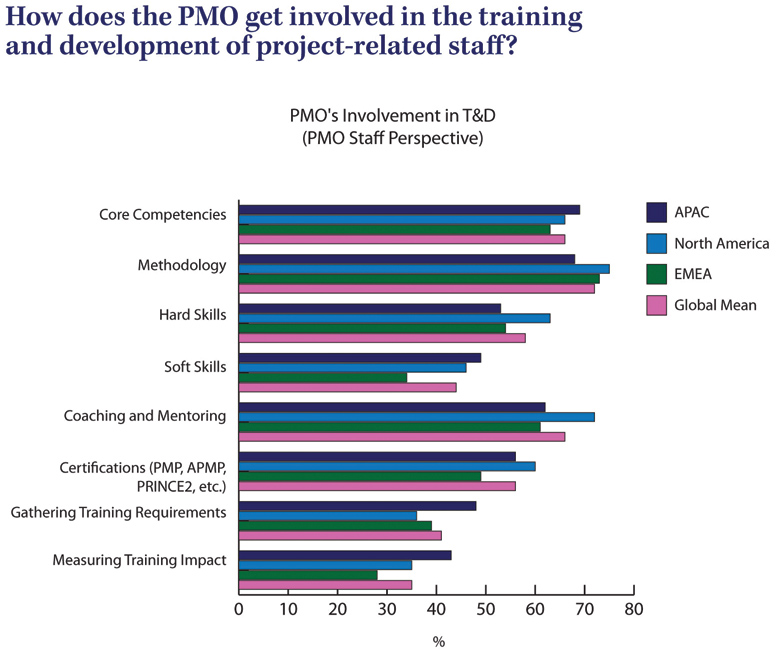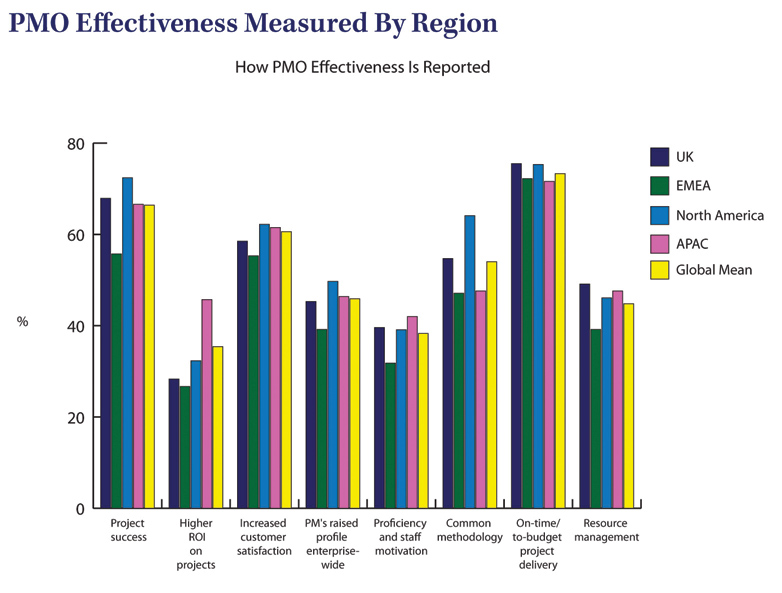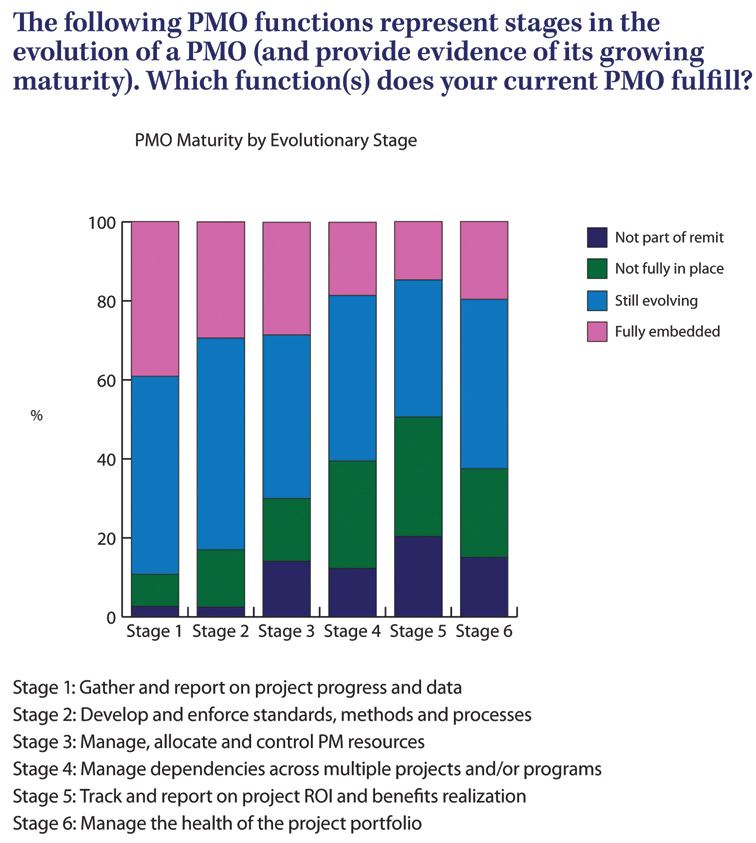“The move to a smart grid requires utilities to raise the bar and attain a higher level of sophistication when it comes to project management. Specifically, a project management office will help utilities train and support their workforce to implement the type of transformational change needed to achieve collaborative and cross-functional teams, implementation of innovative technologies, and transparency with customers.” – Julie Zinn Patti, Director of Operations, Spirae (Ft. Collins, Colo.)
In the comments above, Ms. Zinn Patti points out that utilities are at varying stages of implementing solid project management teams, much less an established enterprise-wide project management office (PMO) – but the benefits are worth the effort for tackling one of the industry’s greatest challenges. Indeed, the transformation of our energy infrastructure is underway, spurred on by increasing power demands, the quest for energy independence, aging systems and federal incentives via the American Recovery and Reinvestment Act (ARRA) to deploy smart grids.
But for an industry built on reliability of service and tradition, the move to a smart grid requires the ultimate in change management. Utilities will need to break down internal barriers and develop a team approach. That means bridging the service, IT and operational side, transitioning to a cutting-edge, distributed, two-way data system demanding interoperability, and all the while, executing outreach and educational programs to avoid customer backlash.
Defining the PMO
There is no “one-size-fits-all” PMO. Each PMO is as unique and specific as the corporate culture it supports. However, it is worthwhile to define generally what a PMO is and what it does.
According to the Dictionary of Project Management Terms, 3rd Edition, a project management office is an “organizational entity established to assist project managers throughout the organization in implementing project management principles, methodologies, tools, and techniques.” (Ward, 349)
The PMO is the instrument through which an organization successfully deploys project management. A PMO, like project management itself, is a means to an end, not the end itself; and, as such, it is strategic in its purpose and objective.
The “end” is whatever business outcome and results the organization has identified as being critical to its survival. This, in the case of utilities, is boosting overall performance in project and program management to create a dynamic, decentralized distribution system.
PMO Study Highlights Best Practices
In March 2011 ESI International undertook an investigation into the global state of the PMO to determine its current perceived value, effectiveness and role as a hub of training by asking the following:
- Do organizations even know whether their PMO is effective?
- Is it deemed valuable to the enterprise as a whole?
- Is the PMO really a Center of Excellence in which best practices are identified and made available to their project managers?
The published ESI report titled, “The Global State of the PMO: Its Value, Effectiveness and Role as the Hub of Training”, encompasses 3,740 senior level project and program managers from five continents in over 16 industry sectors including utilities, and offers insights into the PMO from both a PMO and non-PMO staff perspective.
No matter where a utility company is in the development of a PMO, the study’s findings can serve as a roadmap for developing and/or refining a PMO and a reference guide for industry best practices.
PMOs as a Hub of Training
The study shows that there can be a strong disconnect between the PMO being seen as a positive force in the initial training of project-oriented staff and then ongoing career management.
Utilities should ensure that PMOs clearly communicate the value of knowledge transfer, the importance of succession planning conducted through mentoring, and the very fact that training is available and encouraged.
From a global perspective, the study shows that the PMO is strongest as a training hub for methodology and tools (78.2 percent), followed by other hard PM skills such as planning, scheduling and risk management (51.2 percent). Coaching and mentoring (46.1 percent) and other soft skill training (42.6 percent) lag behind considerably.
PMOs need to make sure they place equal importance on hard and soft skills, such as leadership and critical thinking, for training and development in order to have a positive influence on career progression.

How does the PMO get involved in the training and development of project-related staff?
Measuring PMO Effectiveness
A key finding in this study is the lack of measurement for PMO effectiveness in most of the world. Three out of four non-PMO staff say that their organization either does not measure or they do not know whether it measures PMO effectiveness. In fact, more than half do not measure PMO effectiveness at all.
On a global level, 73.3 percent claimed the PMO communicates and reports its own effectiveness through projects delivered on time and to budget while 66.4 percent claimed PMO effectiveness was expressed through an increase in successful projects. Almost 61 percent pointed to customer satisfaction.
The findings reinforce that for those that do measure PMO effectiveness, delivering projects on time and to budget is very much the main measuring stick for PMO effectiveness worldwide, yet that is only one piece of the PMO effectiveness puzzle. Success has not only to do with on-time and to-budget project delivery, but also with client satisfaction.

How PMO effectiveness is reported
Role and Value of PMO
When asked what role they think the PMO should play, nearly an equal number of PMO (22 percent) and non-PMO (23 percent) staff members agreed it should fulfill its role as a center of excellence. From the PMO staff member perspective, nearly half claimed it should be involved in some level of project management.
From a value perspective, the top three areas in which the PMO is most valued comes in the form of improved workflow, risk management and the provision of tools and processes.
Nurturing the PMO
As PMOs develop and mature, they will advance from the beginning stages of gathering and reporting on project progress and data (stage one) and developing and gathering standards, methods and processes (stage two) to full maturity at stage six, which is portfolio management.
The study finds that only one in five PMOs is operating at the strategic level worldwide. In fact, only 20 percent report they engage in portfolio management, and 15 percent report that they track return on investment and benefits realization. Of all six stages of PMO maturity, PMOs are strongest in reporting on projects (stage one) and the weakest on determining project ROI (stage five).
Utilities will benefit most from a PMO that progresses and matures over time through all six stages, becoming increasingly more sophisticated and deeply entrenched in corporate culture.

Shows the 6 stages of PMO maturity
PMO Study: Lessons Learned
When reflecting on the past 12 months, survey responses indicate that the top three challenges facing PMOs include process, scope and methodology adoption; stakeholder buy-in; and a lack of resources.
The study also points out that PMOs need to be able to adjust and respond to changing organizational needs. Make sure your PMO can:
- Fine-tune its ability to adopt training models that best serve organizational needs by measuring ROI.
- Continue to increase the perceived value of the PMO to the organization by evolving in step with the rest of the organization.
- Improve enterprise-wide communication to reinforce its value.
- Garner executive level support and buy-in.
Establish the Business Value
No matter where utilities are on the PMO journey, PMOs must clearly establish and prove its business value. One way in which utilities can improve their chances of PMO impact is to establish formal effectiveness measurements on both the training and PMO levels.
By implementing both pre- and post-training assessments, PMOs can foster their role as the hub of training for everyone in the organization while reinforcing their value. By measuring for PMO effectiveness, organizations can leverage the PMO not only for tactical project support, but also for more strategic, enterprise-wide professional development.
A changing power grid means a changing workforce. Establishing and nurturing a PMO can be a strategic step toward providing the coaching and mentoring, along with other soft skills training, needed to invest in tomorrow’s leaders today.
About the Author

Nancy Nee (PMP, CBAP, CSM) is Executive Director, Project Management & Business Analysis Programs for ESI International and brings more than two decades of PM and BA experience in healthcare, information technology, financial services and energy to ESI’s learning programs. As a SCRUM master and expert in Agile PM, Nancy also has a strong background in strategic enterprise architecture, project governance, business process analysis, continuous process improvement and automated solutions.








